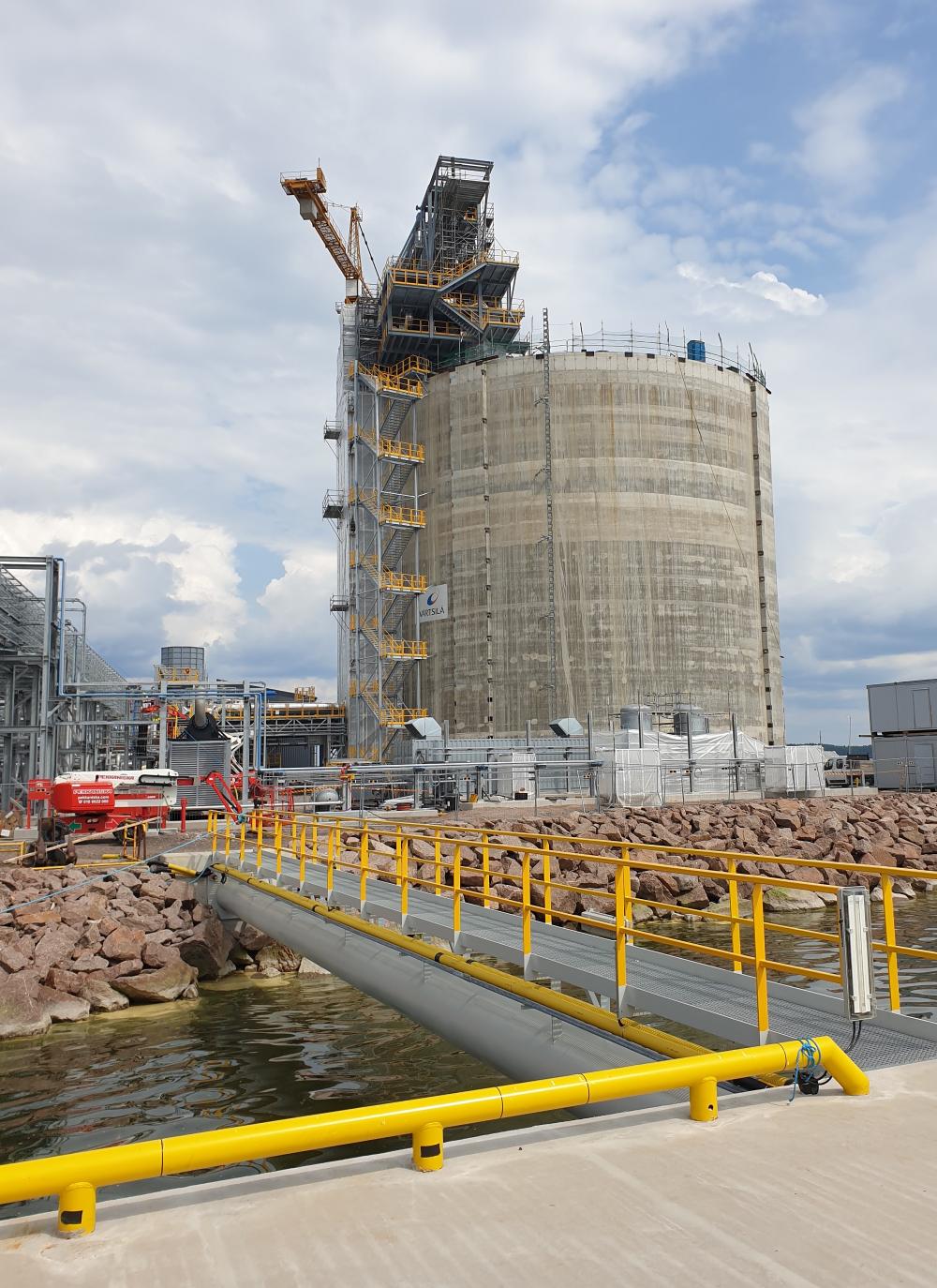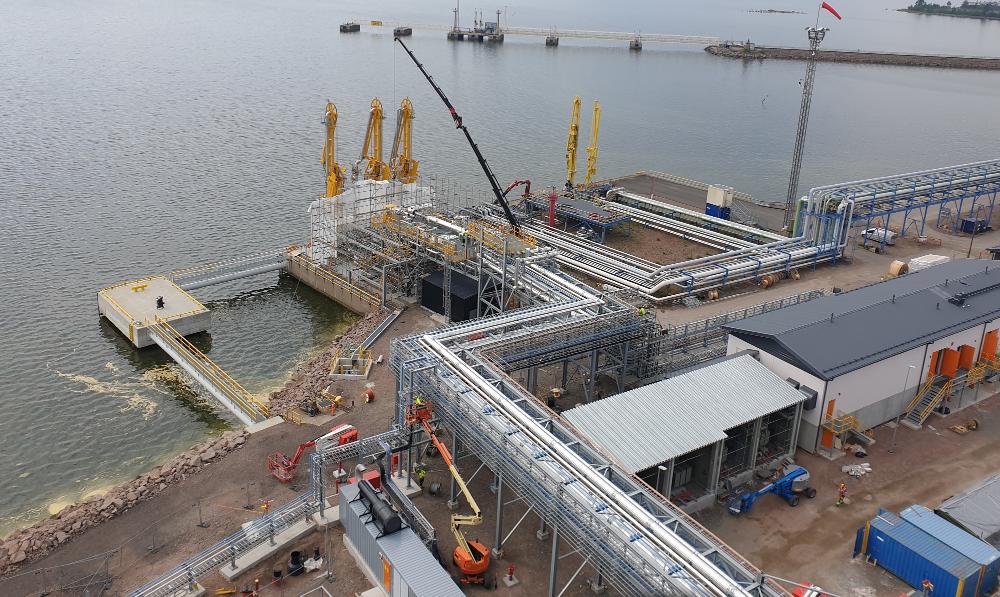Tukes has authorised the construction of the Hamina LNG terminal
In August, the Finnish Safety and Chemicals Agency Tukes authorised the construction of a new terminal for liquefied natural gas (LNG) at the Hamina oil port. The Hamina terminal will be Finland’s third LNG terminal. Its commercial commissioning is planned to take place in the first half of 2021. Tukes is responsible for issuing the construction licence for the natural gas storage, as well as for the monitoring of the safety of storage.
The three LNG terminals will ensure a sufficient supply of LNG in Finland
The two existing LNG terminals in Finland are located in Tahkoluoto in Pori and in Röyttä in Tornio. The Tornio terminal is larger and the Pori terminal is of the same size as the Hamina terminal.
– The third LNG terminal will ensure that the current demand for LNG in Finland can be covered. At the same time, the dependency on natural gas from Russia will decrease, says Senior Officer Arto Jaskari, Tukes.
LNG will be transported to the terminal by tankers, for example, via Rotterdam and from the terminal by road tankers for use by energy utilities and industry all the way up to the region of Kainuu. The quality of the LNG to be unloaded or loaded will be monitored by means of analytical equipment located in the terminal area.
In addition, LNG will be vaporised back into gas and injected into the natural gas distribution and transmission network via metering stations and connecting pipelines to be built. Natural gas can be supplied to the natural gas networks in Finland and also in Estonia via the transmission pipeline connection.
– The Finnish natural gas sector has been significantly affected by the EU energy policy and funding in recent years. The mainly EU-funded natural gas pipeline between Estonia and Finland changed the Finnish natural gas market significantly. In addition, to promote the security of energy supply and environmental protection, the EU has approved substantial state aid under which the Ministry of Economic Affairs and Employment has financed the construction of the LNG terminals. The Ministry has granted EUR 27.7 million for the construction of the Hamina LNG terminal, says Jaskari.
The safety of the giant tanks is ensured
In the Hamina LNG terminal, a total of 15,000 tonnes (30,000 m³) of liquefied natural gas will be stored in above-ground tank. The diameter of tank is 39 metres and the structures on top of the tank reach higher than 50 metres above the ground level. The area also has space for another storage tank with a capacity of 20,000 m³ .
The LNG tank is a double-shell container with an inner tank of 9% nickel steel and an outer tank and roof of reinforced concrete. The space between the outer and inner tanks is insulated with perlite. The concrete bottom plate of the tank is heated and insulated to prevent the freezing of the ground below the tank.
Major-accident hazard analyses and risk assessments have been carried out
In connection with the Tukes licence application, the LNG terminal has been subjected to comprehensive major-accident hazard analyses to identify the hazards involved. The most serious major-accident hazards are associated with mechanical tears or leakages. Different risk scenarios and preparedness for risks have been analysed separately for the dock area, pipelines within terminal, tank area, processes, and vehicle loading. On the basis of these analyses, Hamina LNG Oy has carried out a follow-up of the risk assessments to ensure the terminal safety. The modelling has been carried out in accordance with Tukes’ instructions and for the preparation of an external rescue plan for the rescue department.
The safety of the terminal area is ensured with a concrete wall and separate catchment areas
A 4.2 metres high concrete wall has been built in the border area between the terminal area and the adjacent hazardous chemicals storage area to protect areas outside the terminal, for example, from the thermal radiation effects defined in the accident scenarios.
The extent of possible LNG and natural gas leaks will be limited with the terminal emergency shutdown system (ESD), which enables compartmentalising the process involving LNG by means of separate emergency stop valves. In addition, in case of LNG leaks, the terminal area is divided into three separate spill collection areas: the dock area, the LNG tank area, and the road tanker loading and process area. Each area is equipped with its own spill collection areas, canals and impounding basins. The capacity of the impounding basins has been dimensioned on the basis of the modelling of different accident situations.
– Before the terminal is commissioned, Tukes will carry out a commissioning inspection to check, among other things, the documentation related to the construction of the terminal, the follow-up of the risk assessments, the organisation and safety responsibilities, and the operating instructions, says Jaskari.
Further information: Senior Officer Arto Jaskari, tel. +358 (0)29 5052 149
Email: [email protected]
Picture 1. LNG-tank

APPENDIX
LNG (liquefied natural gas) is natural gas in liquid form. Natural gas can be liquefied at the temperature of -160°C.
LNG is a fossil fuel with lower CO2 and other emissions than in the case of fuel oil, for example. In addition to industrial applications, LNG can be used as fuel in heavy goods vehicles and ships.
LNG enables the storage of natural gas in a more condensed form in energy terms compared to compressed natural gas (CNG).
The system built for LNG is also suitable as such for biomethane processed and liquefied from biogas.
LNG is a highly flammable gas when vaporised. In liquid form, low temperatures and the formation of a vapour cloud are essential hazards.
Picture 2. Dock area



